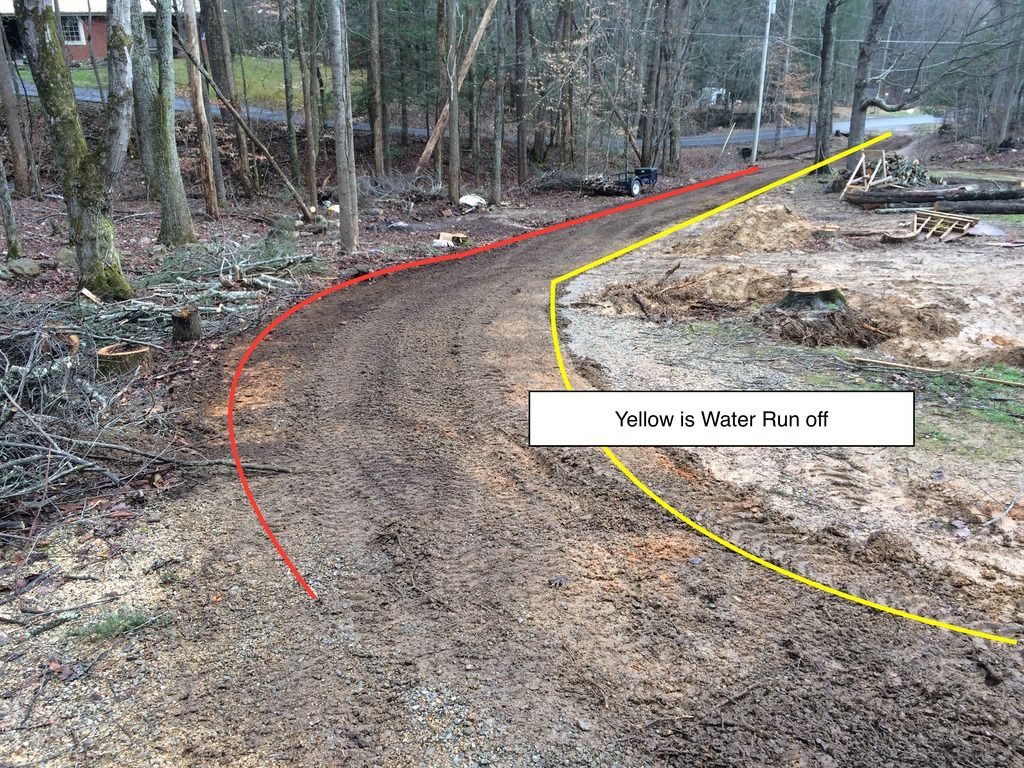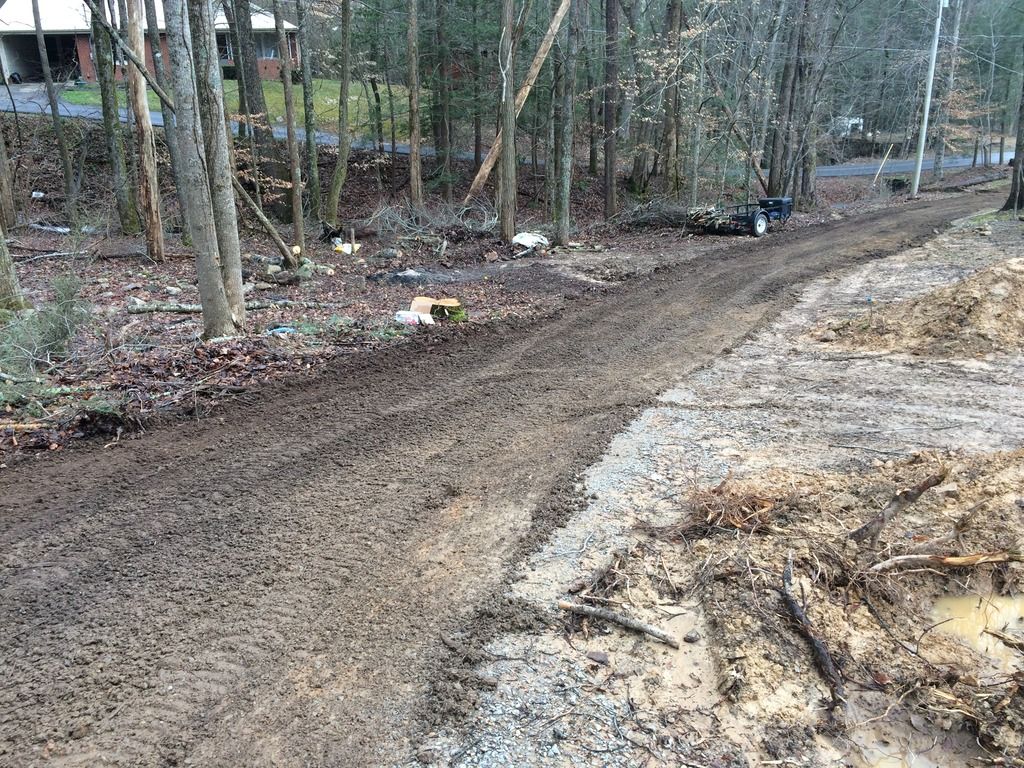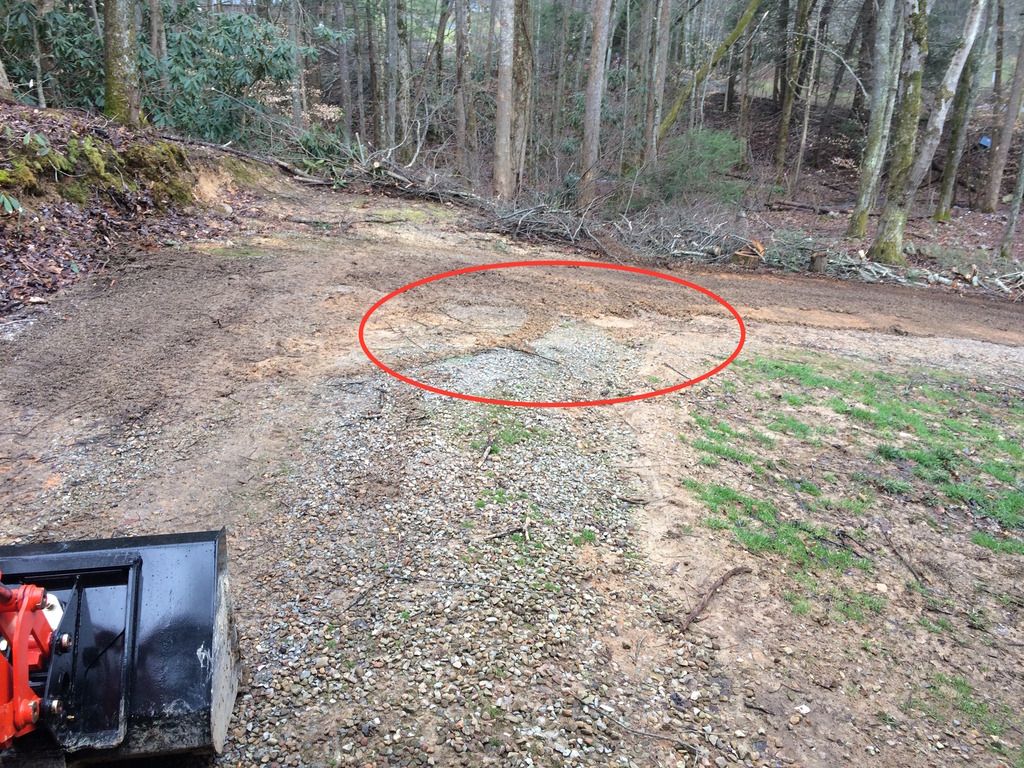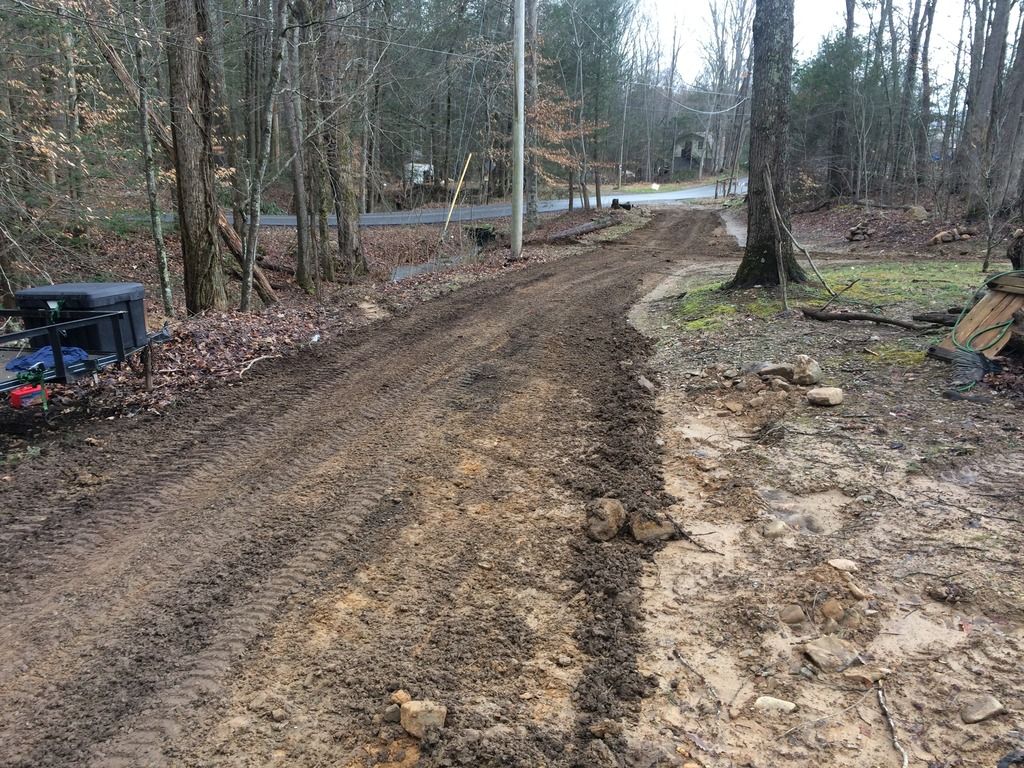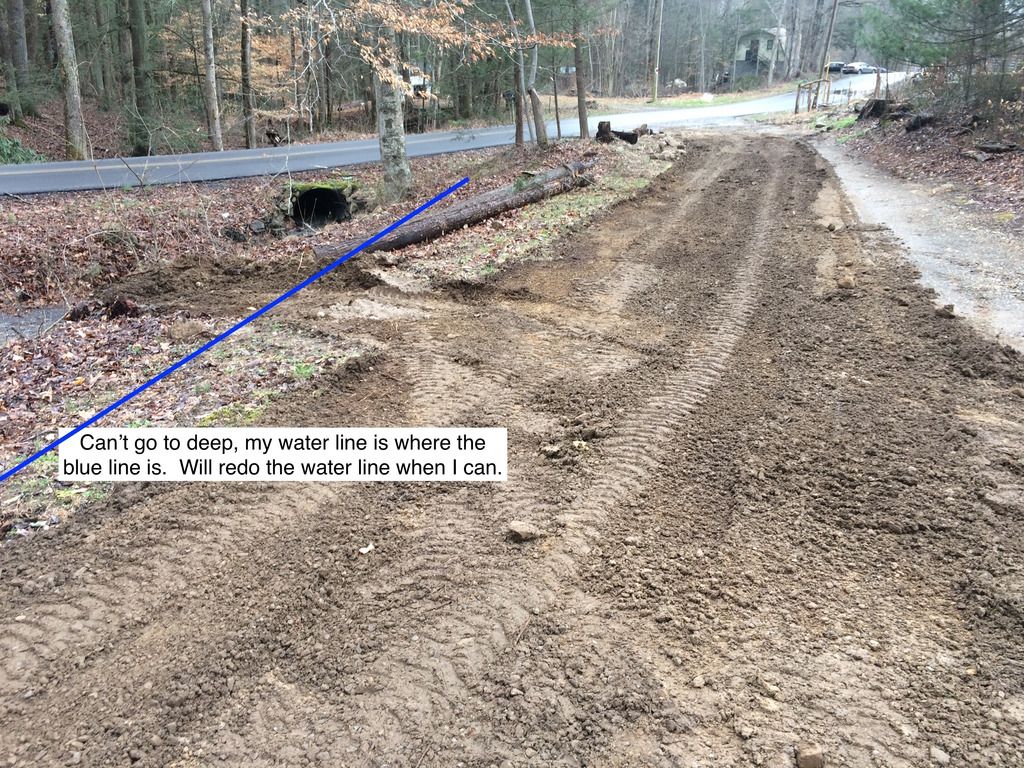fried1765
Super Star Member
- Joined
- Jan 6, 2015
- Messages
- 10,208
- Tractor
- Kubota L48 TLB, Ford 1920 FEL, 8N Ford, Gravely 12 HP "Professional", 48" SCAG Liberty
Here, I just took some photos for you all to see and maybe give some pointers on what my best option is. I can't put in culverts right now and can't do french drains right now, so sloping the driveway and cutting across it is all I can do for now.
This area washed out and is soft. I think water is running under gravel and on top of the clay layer. There is a spot that looks like a spring, water just bubbles out from the middle of the driveway on this slope. Which is the steepest part of the driveway, I literally have to use 4x4 to back up this section or get a running start to make it in the wife's car, picture doesn't do the slope justice.
Drive that goes to neighbors which has a lot of run off and can't seem to get it figured out.
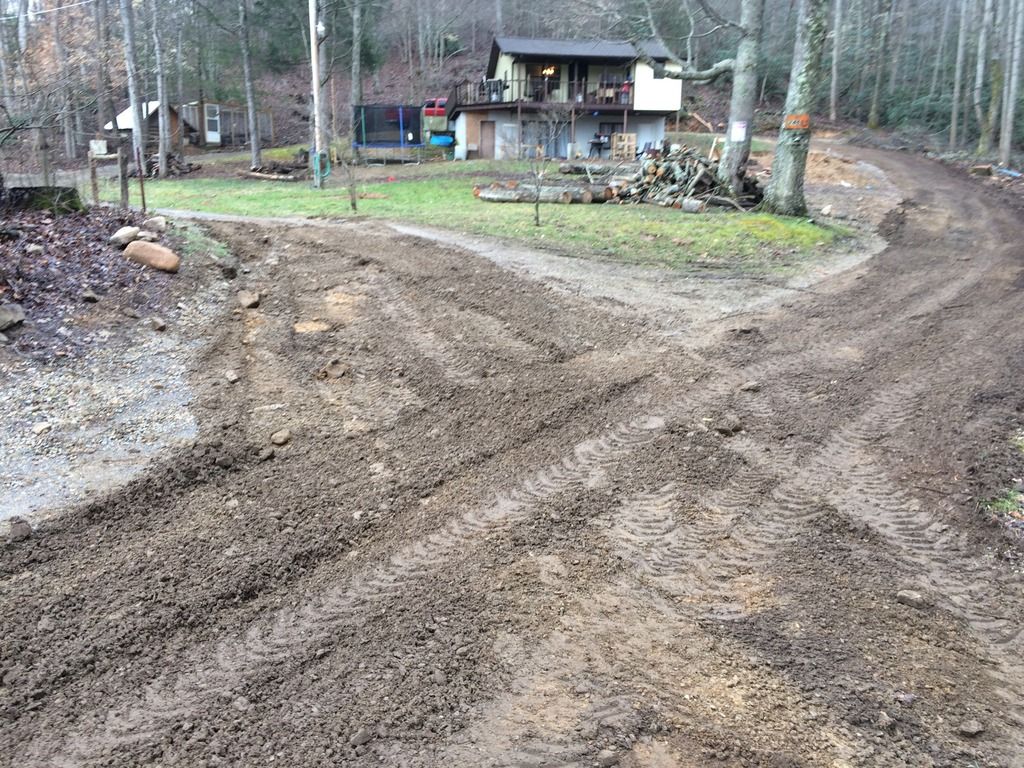
The three most important things for creating a good driveway are:
#1 DITCHES
#2 DITCHES
#3 DITCHES
After the ditches, you will need to find a cheap gravel source, and a friend with a 10 wheel dump.
Then: keep plenty of crown on your gravel surface.
